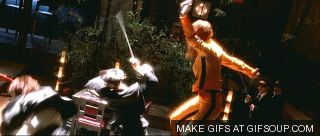Writers have this thing to kick ourselves in the pants where we keep track of our daily word count, and sometimes publicly share them as a sort of competitive brag. The writing software I use even has daily word count goals.
These are of little use to me as the novel I’ve been writing for way too long has inched into 180,000 word territory. If you’re not a word-counter yourself, rest assured, understand that that’s about 80,000 words too many.
I’d come to accept that there was no way a publisher would ever consider such a monstrous book, and that I’d have to put it in a drawer or self-publish. It definitely put a damper on my desire to finish the thing.
Meanwhile, as a person who works in publishing, I’ve been building up a slush pile of my own. I’ve found I’m more likely to finish reading shorter manuscripts, and therefore those are more likely to move into contract territory. Likewise one girl in my writing group is almost finished having her story critiqued and, though we started at the same time, mine isn’t even half way. When I read one novelist’s whole book in less time than it took me to fly to Seattle, I was thinking how nice it was to have something simple and complete.
About a week ago I had a small epiphany that no matter how critical I thought a scene/plotline was, if it made the whole novel unsellable, it couldn’t be that critical.
I started going through every page highlighting only what advanced the plot. Right away I had hard evidence of all the cruft bringing down my craft. I also realized that some scenes which did advance the plot were presenting the same idea that would be brought up later: two dream sequences about the same thing, two scenes on the same seduction, etc.
And this started a cutting fest more gruesome than a vengeful bride looking for a guy named Bill.

Another useful editing tip in this situation has been creating a plot synopsis. I’ve created plenty of them before, but those were note cards showing each scene, and each scene advanced multiple plots. In this case each plot gets a colored line, as if they’re racing across the page. If a chapter advances three plots, three of the stripes get a little longer, and I mark down the chapter name and two-three words on what happened. It’s key that each scene added is exactly two squares wide, so I can be sure the length of the plot line is proportional to it’s coverage in the story. This way I’ve been able to get an idea of where the plot tumors are, by seeing which plotlines are longer than the main storyline. Simply creating this plot sheet has shown me some scenes to cut and others that need to be changed, in addition to the overview of how each storyline is advancing.
And the good news? The first night I cut 1,361 words, and I was feeling good. But last night I cut 9,635 words! I’ve taken to bragging now about my reverse word count. I know, that’s not a thing people do. But I’m proud of my progress, even if it’s only in much-needed destruction.
Now just 69,004 words to go.
I have more to say on editing down posts, but as usual with things I write, this is getting a little long. For those writers still looking to grow their stories, check out my random plot generator. And for those of you who aren’t writers, here’s a vaguely relevant song.
Le Sigh kitteh shamelessly stolen from Creativity Crossroads.


Reverse word count for last week: 193
Last night I cut 839 words.
In March I cut 1,093 words. Mostly one sentence at a time.
This week I cut 554 words.